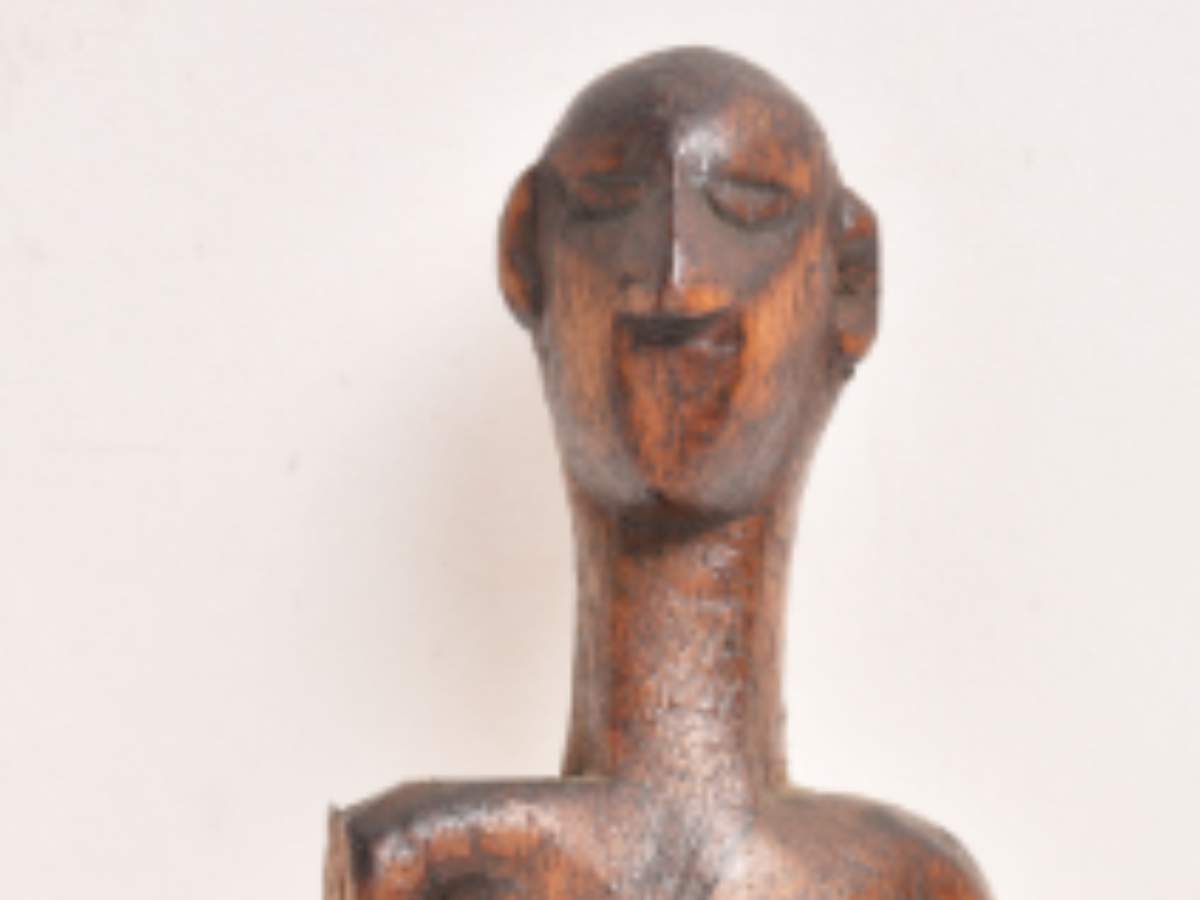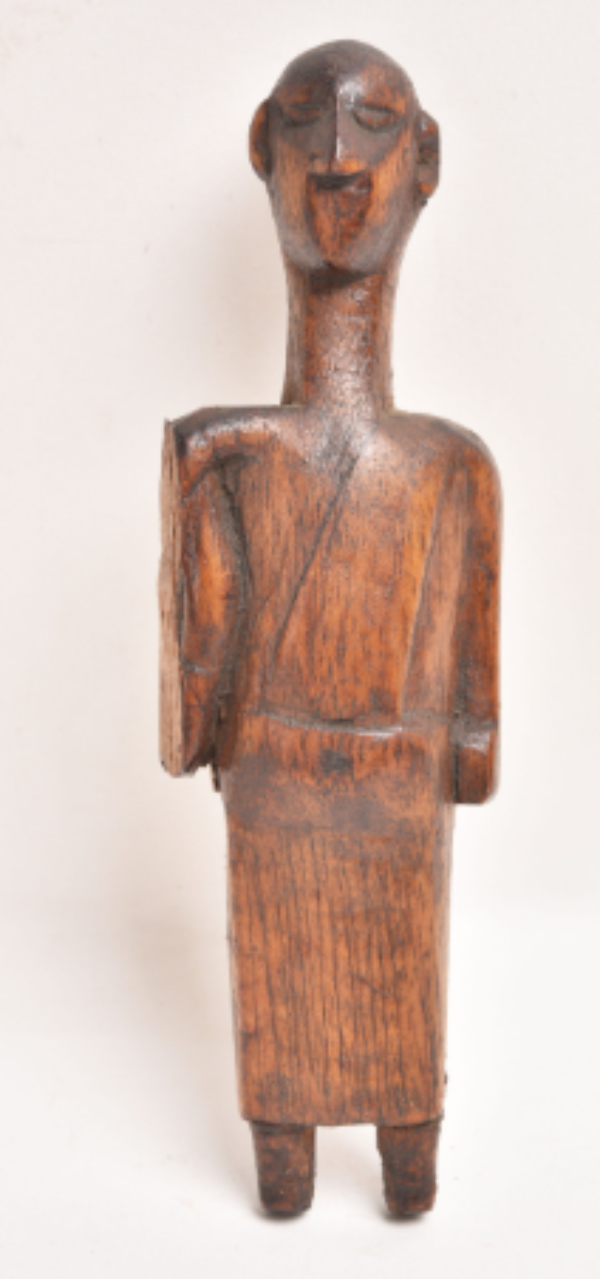State
Tribe Name
Art Type
short description
The standing wooden sculpture of Jharkhand is one of the major representations of the wood carving tradition of the Santhal tribe, an important part of their artistic and cultural expression. One of the most significant indigenous communities of India, the Santhal tribe living in Jharkhand houses a rich tradition of art that is a very honest reflection of humanity's communion with nature owing to the spiritual overtones infused in the art form, which represents day-to-day living as well. The sculpture is a standing figure of man, carefully carved using the traditional process passed down from generation to generation. This is more than an art. It is a culture artifact that has spiritual significance. Such figures are often used in worship or kept in homes to honor ancestors or for spiritual and divine protection. The simplicity and almost naturalistic detailing of the sculpture express the deep reverence of the Santhals for life and nature. And most of the time, the tribesmen will capture their figures in motion or in a symbolic gesture, which they feel represents their relationship with the environment.
Thumbnail

Filter Postion
Left
Filter Background
Off
Theme
Filter Header Image

content
Image

description
The standing wooden sculpture of Jharkhand is one of the major representations of the wood carving tradition of the Santhal tribe, an important part of their artistic and cultural expression. One of the most significant indigenous communities of India, the Santhal tribe living in Jharkhand houses a rich tradition of art that is a very honest reflection of humanity's communion with nature owing to the spiritual overtones infused in the art form, which represents day-to-day living as well. The sculpture is a standing figure of man, carefully carved using the traditional process passed down from generation to generation. This is more than an art. It is a culture artifact that has spiritual significance. Such figures are often used in worship or kept in homes to honor ancestors or for spiritual and divine protection. The simplicity and almost naturalistic detailing of the sculpture express the deep reverence of the Santhals for life and nature. And most of the time, the tribesmen will capture their figures in motion or in a symbolic gesture, which they feel represents their relationship with the environment.
This carving technique is the core of the artistic tradition of the Santhal tribe, whose sculptors learn by doing. To create their statues, the Santhal often uses local wood, carving figures in great detail for the few purposes of beauty and meaning. These works are for decoration and ritual; they help teach successive generations of Santhals about their cultural heritage. The Santhals today profess themselves as master craftsmen, and their wooden sculptures take a prominent place in the rich cultural heritage of India.
This carving technique is the core of the artistic tradition of the Santhal tribe, whose sculptors learn by doing. To create their statues, the Santhal often uses local wood, carving figures in great detail for the few purposes of beauty and meaning. These works are for decoration and ritual; they help teach successive generations of Santhals about their cultural heritage. The Santhals today profess themselves as master craftsmen, and their wooden sculptures take a prominent place in the rich cultural heritage of India.
Image Mode
landscape
promoted
On
Verified
Off
